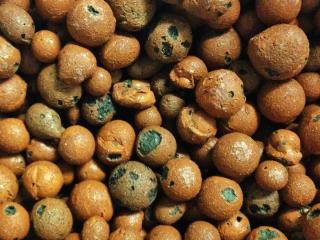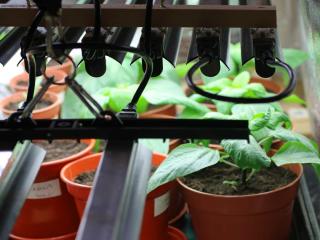

Plants need water, light, and nutrients to live, even during your vacation!
Don’t hold back from leaving, there are many techniques for caring for and watering your indoor plants in your absence.
This age-old system uses pear-shaped terracotta containers. Pushed into the substrate near the plant but flush with the top of the pot, you fill them with water before you leave. Terracotta is a permeable material that slowly allows water to pass through. This way, your plants get regular water supply, which is much better than a sudden, hefty watering followed by a dry spell.
You can then let them take over for 1 to 2 weeks. If you’re away for a longer time, you’ll need to count on someone to refill the oya, which is still far less tedious than watering every three days!
This trick is easy as pie! Just grab a bottle and pierce the cap with a needle. Then, fill your bottle, turn it over and check that drops are escaping from the cap. Stick it into your pot and let this DIY drip provide water to your plants. This low-cost technique keeps your plants hydrated, so you can be away between two weeks and a month, depending on the size of the bottle and the needs of your plants.
Another method is to use a string soaked in a water bucket on one side and stuck into the soil on the other. The string will absorb the water by capillarity and distribute it in the substrate. The roots of your plant will then have a constant water supply. You can leave your plants in peace for one to two weeks. Even longer if someone can stop by to add more water to the bucket.
Many indoor plants originate from tropical forests where the atmosphere is hot and moist. These plants find enough warmth in our homes but often lack humidity.
 For this, it is advised to fill your saucer with water-soaked clay balls. As the water evaporates, it creates ambient humidity, beneficial for the plant.
For this, it is advised to fill your saucer with water-soaked clay balls. As the water evaporates, it creates ambient humidity, beneficial for the plant.
During your vacation, especially if it’s in the middle of summer, don’t hesitate to gather your plants together on a common bed of clay balls. Use a large, shallow basin filled with a thick layer of clay balls. Then, pour water so that the level just reaches below this layer.
Indeed, the plants should not have their roots sit in stagnant water. Using the basin will create a thicker layer of balls than in single saucers, causing evaporation to last longer.
You probably close all shutters when you go on vacation, to discourage any passing burglars. However, if your plants get no light, they will quickly perish. Three possibilities for this:
 During the warm season, place them outdoors in the shade. Indeed, avoid direct sunlight which would burn and dry them out. In the shade, they will need less water while benefiting from light. At this time of year, in summer, cold-sensitive plants should not suffer from too low temperatures. Plus, they’ll appreciate the humidity of the night.
During the warm season, place them outdoors in the shade. Indeed, avoid direct sunlight which would burn and dry them out. In the shade, they will need less water while benefiting from light. At this time of year, in summer, cold-sensitive plants should not suffer from too low temperatures. Plus, they’ll appreciate the humidity of the night.During the growth period (from spring to fall frosts), plants grow and need regular fertilizer input for this.
Think about giving them natural fertilizers just before you leave, this will be enough for 2 weeks to 1 month depending on the species. For this, do a good watering with water mixed with a little liquid fertilizer. You can also do a surfacing of compost for the hungrier ones.
Some plants are more sensitive to pests and diseases than others. Perhaps you have even treated some of them?
Each disease or pest is linked to preventive treatments. To avoid any risk, find out about these treatments based on the sensitivity of your plant.However, you can always spray stinging nettle manure on your plants, it strengthens them and prevents the arrival of many pests and diseases. Afraid of aphids? Spray a little water containing 10% of black soap liquid before you leave.